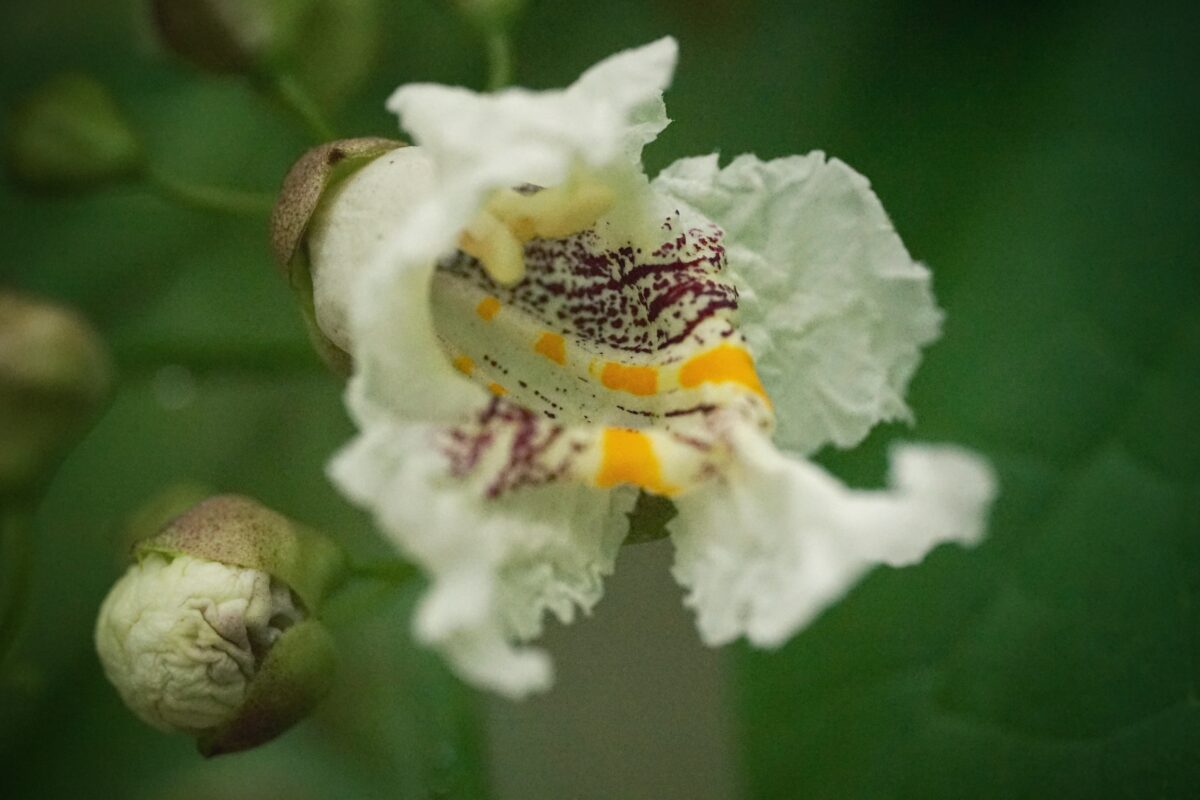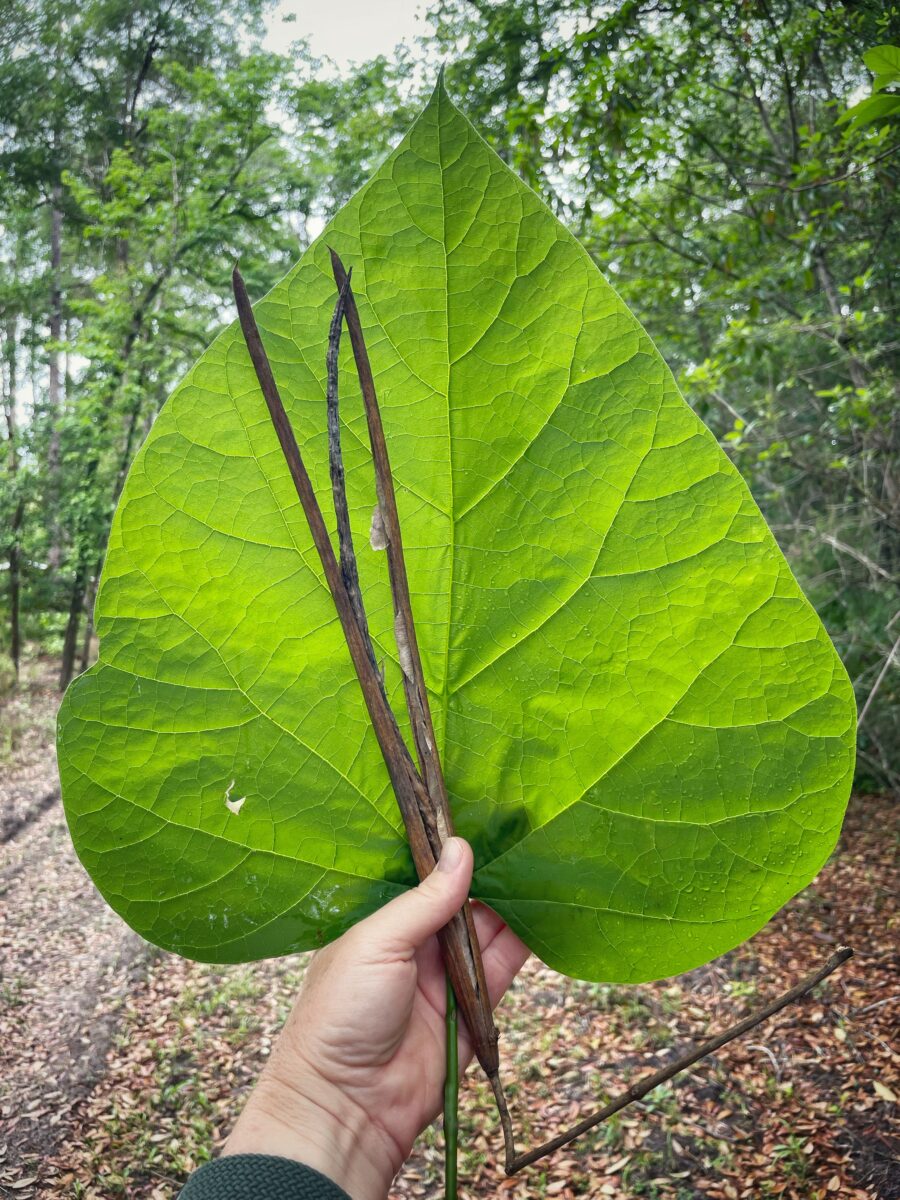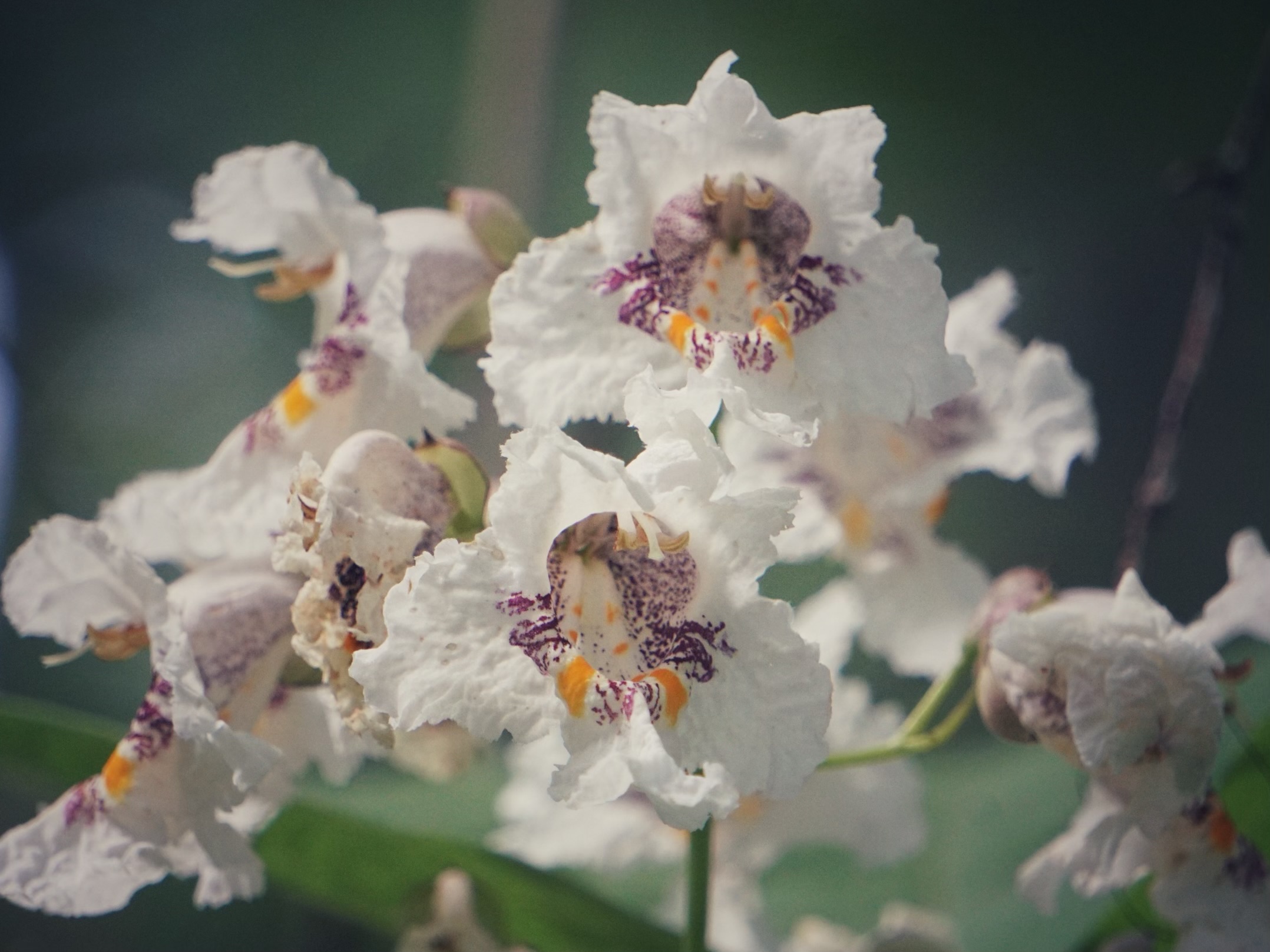Southern catalpa
Pictured above: Southern catalpa (Catalpa bignonioides) by Betsy Harris. Click on terms for botanical definitions. View post as a PDF.
The Southern catalpa (Catalpa bignonioides) is a strikingly beautiful tree with a fascinating cultural heritage. Also commonly referred to as the worm or fish bait tree, it is a larval host for the Catalpa sphinx moth (Ceratomia catalpa), whose caterpillars are tough and juicy, making them ideal fish bait! They were often planted specifically for this reason. The voracious caterpillars can defoliate a tree once or even twice a year, with no apparent negative impact. New leaves typically emerge within a month of defoliation.
This 25- to 40-foot tree bears short crooked branches that form a somewhat irregular-shaped crown. Large heart-shaped and prominently veined leaves are 6 to 12 inches long and about half as wide with a petiole almost equally as long. They are oppositely arranged and deciduous. Flowers are formed in clusters of 10 to 20, with each blossom on a short stem. Individual flowers average 2 inches across and are two-lipped, united at the base. They open into 5 bright white ruffled petal-like lobes. The throat is adorned with large yellow spots and smaller dark purple spots and stripes. The seed pods can reach up to 18 inches long, ripening into a dark brown color and providing yet another common name — Cigar tree.


The genus name Catalpa is a Muskogean word for “tree.” The species epithet bignonioides refers to the related Crossvine (Bignonia capreolata), which has similarly shaped flowers.
Family: Bignoniaceae (Bignonia family)
Native range: Throughout Panhandle and scattered peninsular counties south to Hillsborough and Polk
To see where natural populations of Southern catalpa have been vouchered, visit florida.plantatlas.usf.edu.
Hardiness: Zone 8A–9B
Lifespan: Perennial
Soil: Moist loam
Exposure: Full to part sun
Growth habit: Up to 70 feet tall, 35 feet wide
Propagation: Seed, cuttings
Garden tips: Southern catalpa can make a very showy statement or shade tree and is highly adaptable in moist to dry conditions. However, maintenance should be considered before adding to a landscape. The plant drops flower and seed pod litter as well as large leaves that can have a foul odor when crushed. It also forms root suckers.
Southern catalpas are occasionally available from nurseries that specialize in Florida native plants. Visit www.PlantRealFlorida.org to find a nursery in your area.

